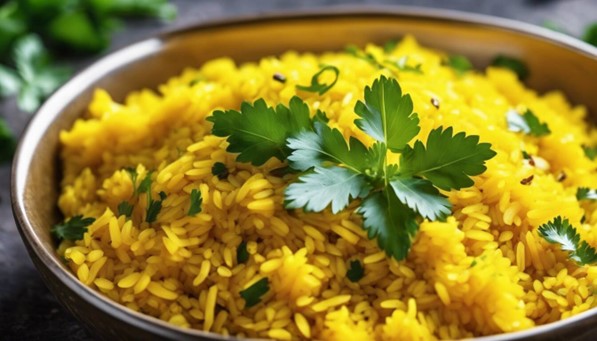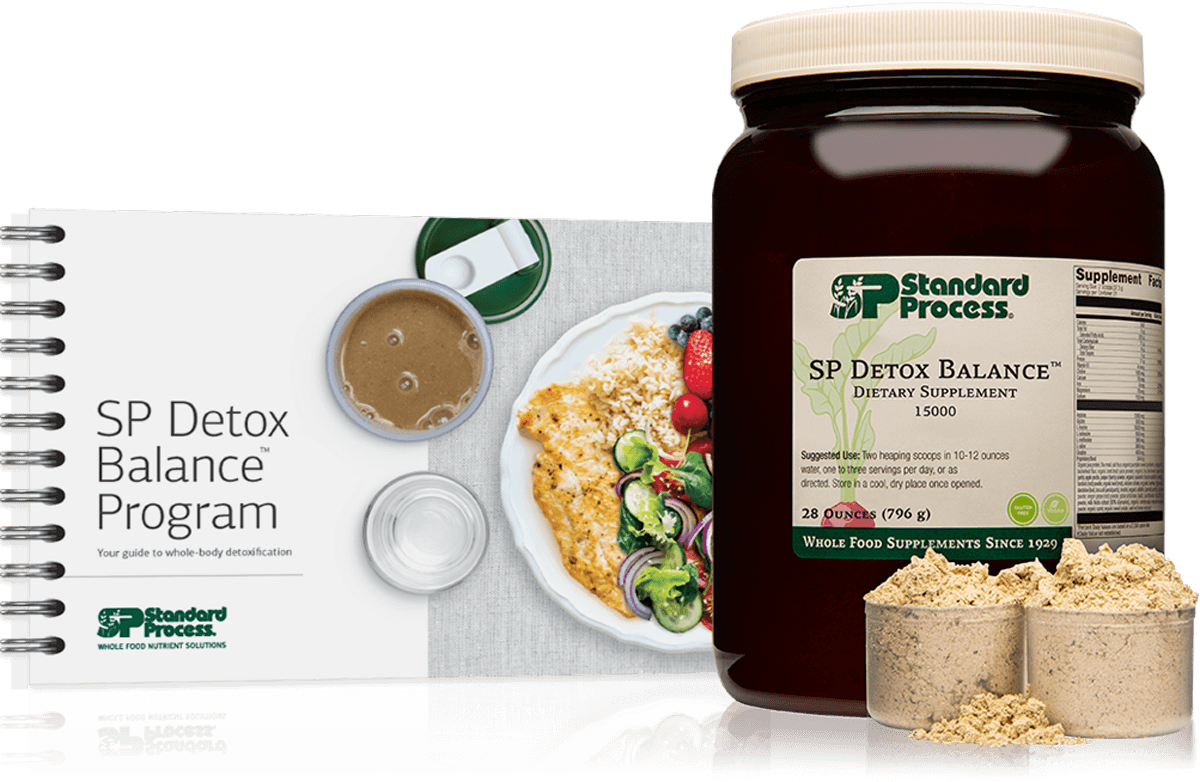Turmeric Rice Recipe:
A Flavorful and Healthy Indian Dish
Making turmeric rice is a soothing process, filled with the enchanting aroma of spices. With staples like basmati rice, aromatic veggies such as onions and garlic, and, of course, turmeric powder, you're already off to a promising start. The surprising part? It's not just about stirring these ingredients together. There's a specific manner in which they need to mingle - roasting whole spices like cumin seeds, for instance, in warm oil unlocks an additional depth of flavor. All set? Let's explore the list of ingredients needed for this golden-hued delight.
To make turmeric rice, start by rinsing the rice until the water runs clear. Then, sauté onion and garlic in olive oil and butter, add the rice and turmeric, pour in chicken broth, simmer until the liquid is absorbed, and remove the bay leaf before serving. This flavorful dish not only adds a vibrant touch to your meal but also introduces you to the potential health benefits of turmeric.

Exploring the Ingredients for Turmeric Rice
When creating a mouthwatering turmeric rice dish, a few key ingredients are indispensable. First and foremost, let's talk about basmati rice. This fragrant, long-grain rice variety is favored in Indian cuisine due to its delicate aroma and fluffy texture when cooked. Its slender grains imbue the turmeric rice with a lightness that perfectly complements the earthy spice of turmeric. Traditionally, basmati rice is rinsed thoroughly before cooking to remove excess starch, ensuring each grain remains distinct.
Turmeric powder, derived from the rhizome of the Curcuma longa plant, is the heart and soul of this dish. Beyond its vibrant hue, turmeric is celebrated for its warm, peppery flavor with subtle notes of ginger and orange. This humble spice not only tinges the rice with a golden yellow color but also infuses it with a distinctive warmth that binds all the flavors together. It's important to use turmeric judiciously to avoid overpowering other ingredients while still imparting a rich and inviting fragrance.
As any good chef knows, building depth of flavor often begins with what are known as aromatics: namely onions, garlic, and ginger. When sautéed gently in fragrant ghee or oil, these aromatics release their tantalizing scents, elevating the entire dish. Onions provide a sweet yet savory undertone, while garlic's pungent kick adds an irresistible complexity. Lastly, ginger delivers a spicy and aromatic note that enlivens every bite of the dish.

It's clear that each ingredient plays a crucial part in balancing and enhancing the overall profile of turmeric rice.
The combination of these elements sets the stage for crafting a vibrant harmony of flavors and textures in turmeric rice. But we're not done yet – there are more building blocks to explore!
Prepping Your Aromatics and Vegetables
One of the essential steps in creating an aromatic and flavorful pot of turmeric rice is starting by sautéing the aromatics. This process involves infusing the oil or butter with the delicious flavors from finely chopped onions, minced garlic, and ginger. As these ingredients sizzle in the pan, they release aromatic compounds that bring depth and complexity to the dish.
Sautéing is a cooking method that uses direct heat to cook food quickly in a small amount of oil or fat. By gently cooking the onions, garlic, and ginger in oil or butter until they turn golden brown, you're enhancing their natural sweetness and creating a savory foundation for the turmeric rice. The slow caramelization brings out earthy undertones that beautifully complement the vibrant flavors of turmeric.
Adding Vegetables for Texture and Nutrition
The incorporation of these vegetables not only brings additional layers of flavor but also contributes essential vitamins, minerals, and dietary fiber to the dish. It's like giving your taste buds and body a treat all at once!
Now, as we continue our journey towards crafting a splendid batch of turmeric rice, we'll move on to explore how these aromatic components are seamlessly integrated into the cooking process, transforming simple ingredients into an irresistible culinary masterpiece.
Cooking Method for Vibrant Yellow Turmeric Rice
Cooking turmeric rice involves more than just infusing the grains with its color and flavor; it's also about ensuring the perfect texture and consistency. Here's a detailed look at the steps involved:
Step 1: Preparing the Rice
Start by rinsing the rice thoroughly under cold water in a fine-mesh sieve or colander. This step helps remove excess starch, which can cause the cooked rice to stick together, resulting in a sticky and clumpy texture. Use your fingers to gently agitate the rice while rinsing to ensure that all the starch is washed away.Step 2: Infusing the Rice with Turmeric
To achieve the vibrant, golden hue characteristic of turmeric rice, it's essential to infuse the rice with turmeric during the cooking process. Here's how to do it:● In a pot, add the measured amount of water or broth for cooking the rice.
● Stir in the desired amount of turmeric powder into the liquid before bringing it to a boil.
Step 3: Adding the Rice
Once the cooking liquid with turmeric reaches a rolling boil, carefully add the rinsed rice into the pot. Gently give it a stir to ensure that the turmeric is evenly distributed throughout the rice.Step 4: Cooking the Rice
Reduce the heat to low, cover the pot with a lid, and let the rice simmer until all the liquid is absorbed. This typically takes around 15-20 minutes, depending on the type and variety of rice used.PRO TIP: To enhance the flavor of the turmeric rice, consider using broth instead of water for cooking. The broth adds an extra layer of savory flavor to the dish.
Step 5: Allowing Time to Rest
Once all the liquid is absorbed and the rice is fully cooked, remove it from the heat and let it rest, covered, for an additional 5-10 minutes. This resting period allows the steam to evenly distribute within the rice, resulting in fluffy and well-textured grains that are perfectly infused with turmeric's delightful color and earthy taste.With these careful steps, you'll be able to create vibrant yellow turmeric rice that not only looks stunning but also delivers a delightful flavor profile. The aromatic blend of turmeric-infused grains will elevate any meal with its beautiful appearance and delicious taste.
Achieving the Perfect Flavor Balance
Cooking revolves around balancing flavors to create something truly exceptional. When it comes to turmeric rice, achieving the perfect flavor balance is key to a delightful eating experience.
Balancing Seasonings
To bring out the rich flavors of turmeric, it's essential to season the rice just right. Salt and black pepper are your secret weapons in achieving this delicate balance. The salt enhances the overall taste while the black pepper adds a subtle spiciness that complements the earthy and slightly bitter notes of turmeric.It's all about bringing out those earthly flavors and giving them a little lift with a hint of spice and saltiness. Adding salt early in the cooking process allows it to infuse into the rice, ensuring that every bite is perfectly seasoned. As for black pepper, just a sprinkle can make all the difference. It's like adding a touch of magic that brings the dish to life.
Enhancing Aroma
Now, let's talk about enhancing the aroma of your turmeric rice. Enter ghee or clarified butter. Drizzling a bit of this golden goodness over the cooked rice imparts a luxurious richness and aromatics that elevate the overall taste experience. The gentle nuttiness and buttery aroma of ghee enhance the natural flavors of the rice, creating an enticing fragrance that will have everyone asking, "What's cooking?"It’s like unlocking a treasure trove of aroma that will captivate your senses.
Imagine you're taking your first bite of turmeric rice with this flavorful enhancement – your taste buds are greeted with layers of warm, buttery tones that complement the earthiness of the turmeric, taking your dining experience to a whole new level. The addition of ghee not only enhances the overall taste but also ensures that every grain of rice is coated in richness, creating a truly indulgent dish.
By balancing seasonings and enhancing aroma, you’re well on your way to creating turmeric rice that’s bursting with flavor and aroma, captivating everyone’s senses and leaving them wanting more.
Serving Suggestions and Pairings for Turmeric Rice

Turmeric rice is incredibly versatile and can complement a wide range of dishes. Whether you're planning a family dinner or a special culinary event, pairing the turmeric rice with the right accompaniments can truly elevate the dining experience.
One classic pairing for turmeric rice is with grilled or roasted meats. The earthy flavor of the turmeric complements savory meats such as grilled chicken, lamb chops, or roasted pork tenderloin. The vibrant color of the turmeric rice also adds visual appeal to the plate, making it an attractive side dish for meat-based entrees.
For those who prefer vegetarian options, turmeric rice pairs exquisitely with vegetable stews and curries. The subtle spiciness of the turmeric enhances the flavors of hearty vegetable dishes, creating a harmonious balance on the palate. Consider serving it alongside a rich eggplant curry or a fragrant chickpea stew for a satisfying vegetarian meal.
Moreover, turmeric rice is an excellent accompaniment for Mediterranean-inspired meals. Its aromatic profile blends seamlessly with dishes from Mediterranean cuisine, adding depth and warmth to the dining experience. When preparing a Mediterranean feast, consider serving turmeric rice alongside dishes like grilled fish with lemon and herbs or a flavorful Mediterranean vegetable medley.
Given its Indian origins, turmeric rice naturally complements traditional Indian dishes. It serves as a perfect side dish for classic Indian entrees such as chicken tikka masala, vegetable biryani, or lentil curry. The vibrant yellow hue of the turmeric rice beautifully contrasts with the rich colors of these Indian delicacies, enhancing both the visual and gustatory appeal of the meal.
As an example, imagine a dinner table adorned with an array of savory Indian dishes - succulent chicken tikka masala, fragrant vegetable biryani, and creamy lentil curry. Placing a generous serving of aromatic turmeric rice beside these delectable offerings not only completes the visual presentation but also provides a delightful balance of flavors to elevate the entire dining experience.
With its versatility and ability to complement an array of cuisines, turmeric rice shines as a flavorful and adaptable dish that can be enjoyed in myriad culinary contexts. Whether you opt for meat-based cuisines, vegetarian fare, or traditional Indian delicacies, incorporating turmeric rice into your menu will undoubtedly add an extra layer of indulgence to your dining affair.
Elevating your dishes through delightful pairings is just one way to savor the benefits of turmeric. Let's now explore how this vibrant spice can enhance not just the flavor but also the nutritional value of your meals.
Health Benefits of Adding Turmeric to Your Diet
Turmeric, a root related to the ginger family, has garnered a great deal of attention for its potential health benefits. The star component in turmeric is curcumin, believed to have powerful anti-inflammatory and antioxidant properties that may reduce the risk of chronic diseases and improve overall well-being.
Anti-Inflammatory Properties: Inflammation is the body's natural response to injury and infection. However, when inflammation becomes chronic, it can contribute to the development of several diseases. Curcumin, the key component in turmeric, has been noted for its ability to suppress inflammatory molecules in the body, potentially helping alleviate symptoms in conditions like arthritis and inflammatory bowel disease.
Antioxidant Properties: Curcumin also acts as a powerful antioxidant, helping to neutralize harmful free radicals and protect the body from oxidative damage. Oxidative damage has been linked to various chronic diseases, including cancer, heart disease, and Alzheimer's. By combating oxidative stress, turmeric may play a role in reducing the risk of these conditions.
Studies suggest that turmeric may have potential benefits for heart health. It may improve endothelial function, referring to the ability of blood vessels to dilate properly and maintain healthy blood pressure levels—key factors in reducing the risk of heart disease.
Incorporating turmeric into various dishes has provided both flavor and potential health advantages.Incorporating turmeric into your diet through dishes like turmeric rice is an enjoyable way to harness its reputed health benefits. While further scientific research is ongoing, the potential advantages of incorporating curcumin-rich turmeric into your diet are impressive enough to consider it a valuable addition to your culinary repertoire.
Now, let's explore some delightful variations of this vibrant dish with unique twists and flavors.
Common Variations of Turmeric Rice
One of the delightful things about turmeric rice is its versatility. There are several variations, each offering unique flavors and textures that complement different dishes. Let's explore a couple of these variations that can elevate your turmeric rice experience.Lemon Turmeric Rice
Expanding on the vibrant golden hue of turmeric, the addition of fresh lemon juice lends a refreshing burst of flavor to the rice. The zingy citrus notes effortlessly marry with the earthy tones of turmeric, creating a delightful harmony on your palate.
This variation's sunny and citrusy essence pairs exceptionally well with grilled fish or roasted vegetables. The slight tanginess of lemon can also be a delightful surprise in savory rice dishes, adding an unexpected and pleasing dimension to your meal.
Coconut Turmeric Rice
Incorporating coconut milk into the cooking liquid transforms our turmeric rice into a lusciously creamy and aromatic delight, popular in Southeast Asian cuisine. The richness of coconut milk harmonizes beautifully with the warm, earthy flavors of turmeric, resulting in a comforting dish that brings a touch of tropical decadence to your table.
The creamy texture and aromatic essence make coconut turmeric rice an excellent accompaniment for bold and flavorful curries or spicy dishes. It offers a soothing contrast to fiery entrees, providing a mellow yet indulgent balance to the overall dining experience.
By infusing turmeric rice with the bright tang of lemon or the creamy richness of coconut milk, you can create unique and delightful dishes that surprise and satisfy the senses. These simple variations offer an array of new flavor profiles to elevate your dining experience.
As you continue on your culinary journey with turmeric rice, let's now turn our attention to mastering the art of crafting the fluffiest turmeric rice that will enhance any meal it accompanies.
Tips for Making the Fluffiest Turmeric Rice
The secret to perfect turmeric rice lies in understanding a few crucial tips that can make all the difference. Achieving that light, airy texture that makes turmeric rice so delightful is about mastering precision and ensuring every grain has its own space.
Proper Rice-to-Water Ratio: The foundation of fluffy turmeric rice starts with the right ratio of rice to water or broth. For basmati rice, this typically means a 1:1.5 ratio – 1 cup of rice to 1.5 cups of water or broth. This delicate balance ensures that the grains cook to the perfect level of fluffiness without becoming overly mushy or dry.
Getting the ratio correct might seem like a small detail, but it truly is the backbone of achieving that light and airy texture. It's like following a recipe in a cookbook—just a little too much salt can throw everything off, much like just a little too much water can turn your rice into porridge.
Fluffing the Rice: Once the rice is cooked, resist the temptation to dig right in. Instead, allow it to sit covered for a few minutes after cooking. This step allows any remaining moisture to distribute evenly throughout the rice, preparing it for its final transformation into a fluffy masterpiece. After resting, gently fluff the rice with a fork to separate the grains and release excess steam. This simple act encourages each grain to be individually distinct, contributing to that sought-after light and fluffy texture.
Imagine fluffing your turmeric rice as though you're tending to a garden; each grain of rice is like a delicate flower waiting to bloom, and by giving them room to "breathe," you're ensuring they reach their full potential.
Some people underestimate how important this step is—you might end up with clumpy, soggy rice if you skip this important part of the process.
Now that you understand these valuable tricks, apply them the next time you prepare turmeric rice and watch how these subtle changes elevate your dish from good to extraordinary in just a few simple steps!
Perfecting your turmeric rice is not just about following a recipe; it's an art form where attention to detail makes all the difference. Give these tips a try, and you'll be amazed at how they transform your everyday meal into something truly exceptional.






